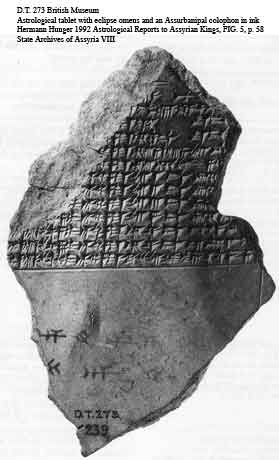- Previous message: John Hudson: "Re: Encoded rendering instructions (was Unicode's Mandate)"
- Maybe in reply to: Dean Snyder: "Encoded rendering instructions (was Unicode's Mandate)"
- Next in thread: Arcane Jill: "Re: Encoded rendering instructions (was Unicode's Mandate)"
- Messages sorted by: [ date ] [ thread ] [ subject ] [ author ] [ attachment ]
- Mail actions: [ respond to this message ] [ mail a new topic ]
Gregg Reynolds wrote at 11:29 AM on Thursday, March 10, 2005:
>But you aren't encoding text, you're encoding a description of a
>physical artifact. I personally don't see the harm in what you propose,
>but transcribing "text" (whatever that means) and encoding information
>about the medium in which the original message is inscribed are
>different things.
If I understand you correctly, you seem to be focusing on damage
indicators as descriptors of physical damage to a given document's medium
- paper, stone, clay, etc. That's an interesting point of view.
I am thinking of them primarily as descriptors of damage to the actual
glyphs, e.g., the loss or obscuring of ink, which therefore represents
portions of actual text that is not visible, i.e., a damaged glyph could
be caused by loss or effacement of the text medium (a hole in the
parchment) or it could be caused by obscuring agents (spilled ink).
Of course, the separation between text and medium gets fuzzier when we
talk about stone inscriptions or cuneiform tablets. Here the text is
represented by physical deformation of the medium itself, and so damaged
glyphs are by definition damaged medium.
Just for fun, I've attached a small image of a 7th century BC cuneiform
document fragment that exhibits both damaged impressed wedges and damaged
ink "wedges" on the same medium - a clay tablet. This image nicely
illustrates in the same document both 2D and 3D fragmentary characters,
something one meets with everywhere in ancient documents.
Respectfully,
Dean A. Snyder
Assistant Research Scholar
Manager, Digital Hammurabi Project
Computer Science Department
Whiting School of Engineering
218C New Engineering Building
3400 North Charles Street
Johns Hopkins University
Baltimore, Maryland, USA 21218
office: 410 516-6850
cell: 717 817-4897
www.jhu.edu/digitalhammurabi/
http://users.adelphia.net/~deansnyder/

- Next message: Marion Gunn: "Re: Encoded rendering instructions (was Unicode's Mandate)"
- Previous message: John Hudson: "Re: Encoded rendering instructions (was Unicode's Mandate)"
- Maybe in reply to: Dean Snyder: "Encoded rendering instructions (was Unicode's Mandate)"
- Next in thread: Arcane Jill: "Re: Encoded rendering instructions (was Unicode's Mandate)"
- Messages sorted by: [ date ] [ thread ] [ subject ] [ author ] [ attachment ]
- Mail actions: [ respond to this message ] [ mail a new topic ]
This archive was generated by hypermail 2.1.5 : Thu Mar 10 2005 - 12:44:46 CST